In March 2020, the global response to the COVID-19 pandemic led to widespread shutdowns. The events industry was severely impacted, resulting in the displacement of thousands of workers and the cancellation of marketing events on a global scale. With people confined to their homes, marketers, and companies were compelled to explore alternative means of reaching their customers and clients in case the pandemic persisted.
During this period, I worked at TK Events, where I contributed to developing a virtual event solution that facilitated interactions between marketers and attendees. This project harnessed a variety of technologies, including Miro, Jira, Swoogo, Aventri, Cvent, a SaaS database system, chat widgets, Zoom, Microsoft Teams, Adobe XD, Figma, Cinema 4D, Octane Renderer, Unreal Engine 5, ZOOM, chatboxes, and Crowdpurr.
Over two years, the company I collaborated with experienced substantial growth, expanding from 12 employees to 35. My responsibilities included overseeing a team of six designers and collaborating with developers to create visually appealing designs that captivated and engaged attendees in the virtual setting. We successfully hosted nearly 200 customized virtual events and received several prestigious awards, all while working remotely from our homes. Some notable accounts I had the opportunity to work on included The Growth Faculty, Canadian Event Awards, Dell Technologies, Salesforce, Samsung, International Security Forum, Baker Tilley, CDW, Haltech, Loblaws, and many others.
Problem Statement
In the wake of the COVID-19 pandemic, the cancellation of live events raised a fundamental question: Could a virtual online event be created that offered attendees comparable or similar experiences? For marketers, the primary objective was to establish connections with potential customers to effectively promote new products and services.
Empathize In response to the challenges posed by the absence of in-person corporate events, it became imperative to devise an alternative solution. This solution aimed to facilitate virtual interactions with clients and partners, enabling them to partake in events from the comfort of their homes while experiencing the same ambiance as live events.
Define / User Profiles & Insights Before embarking on the development process, it was crucial to gain a comprehensive understanding of the virtual attendees' perspectives as perceived by our clients. Most typical attendees of corporate live events shared the following characteristics:
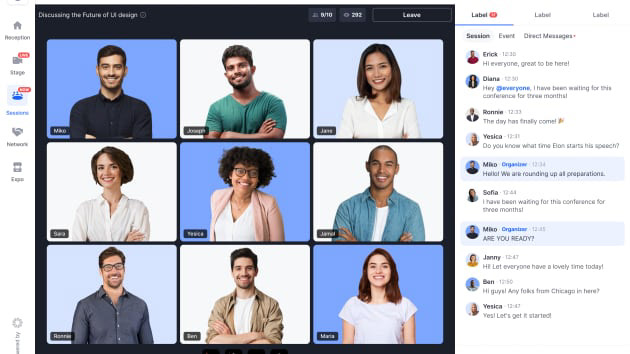
Hopin
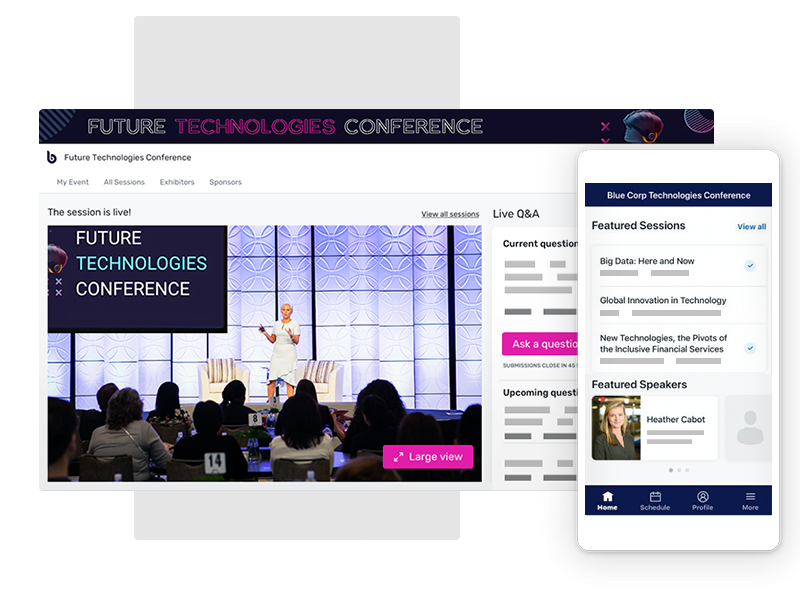
Cvent
Comparison of other Virtual Event Platforms: Hopin (Left), and Cvent (Right), both online virtual events platforms.
Ideate
At this juncture, Zoom Messenger had emerged as the primary platform for hosting live events. Other companies like Hopin and Cvent had also begun to develop their virtual event platforms, although these technologies appeared as extensions of Zoom or Microsoft Teams. The prevailing sentiment was that there was a need for a virtual event platform that could capture the ambiance of a live venue, given the growing dissatisfaction with "Zoom fatigue," where participants were fatigued from staring at grids of people conversing.
Many existing virtual platforms seemed to comprise video tiles, with user interfaces that made virtual events feel more like conventional webpages or spreadsheets. Our vision was to design a virtual events platform that would replicate the atmosphere and aesthetics of a live event, providing a break from the monotonous grid-based video interface.
Proposed Possible Solution
We contemplated the idea of creating virtual venues that closely resembled real convention centers, complete with tailored corporate branding for each online venue. These customized online venues would enable virtual attendees to connect and engage with each other seamlessly.
Architecture and Branding
The Visual Style To bring this concept to life, we integrated architectural design principles, adhered to corporate brand style guides, and carefully selected colors and typography. The result was a virtual venue that embodied the real-world elements of attending a physical convention or event. We aimed to immerse people in an environment reminiscent of a convention center or trade show, complete with venue rooms and inviting lounges. Achieving this design was a significant challenge, but it was a challenge we embraced.
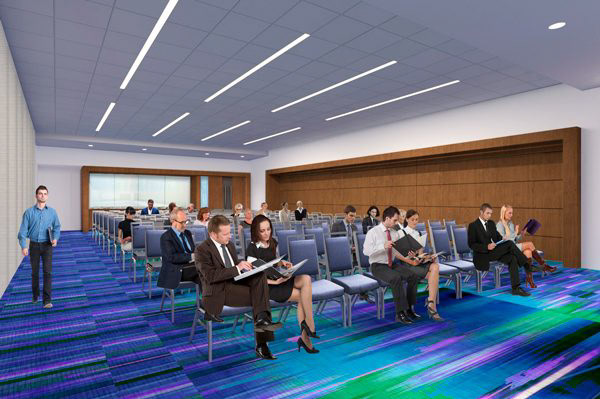
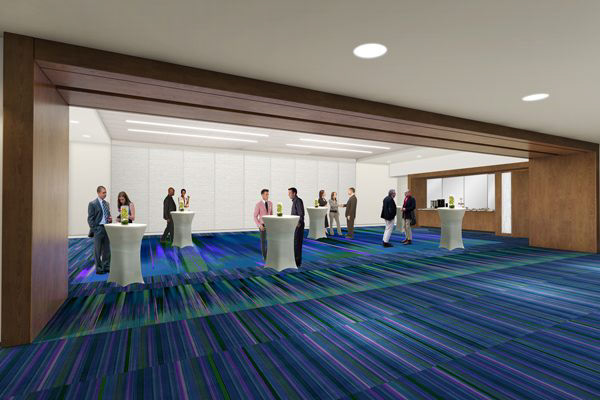
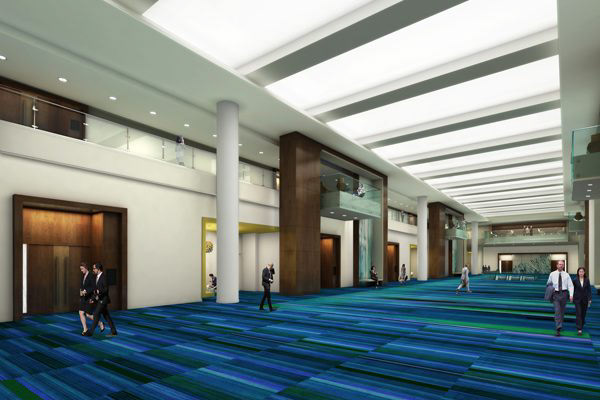
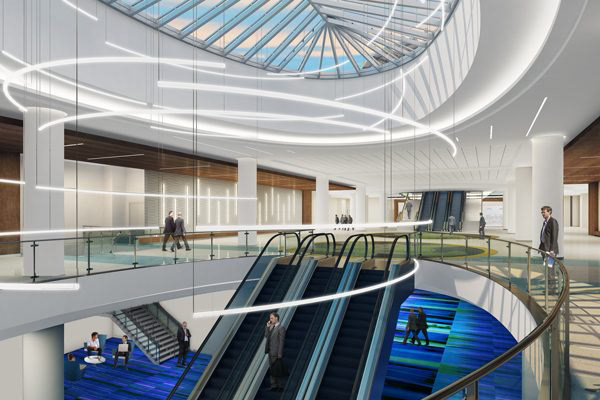
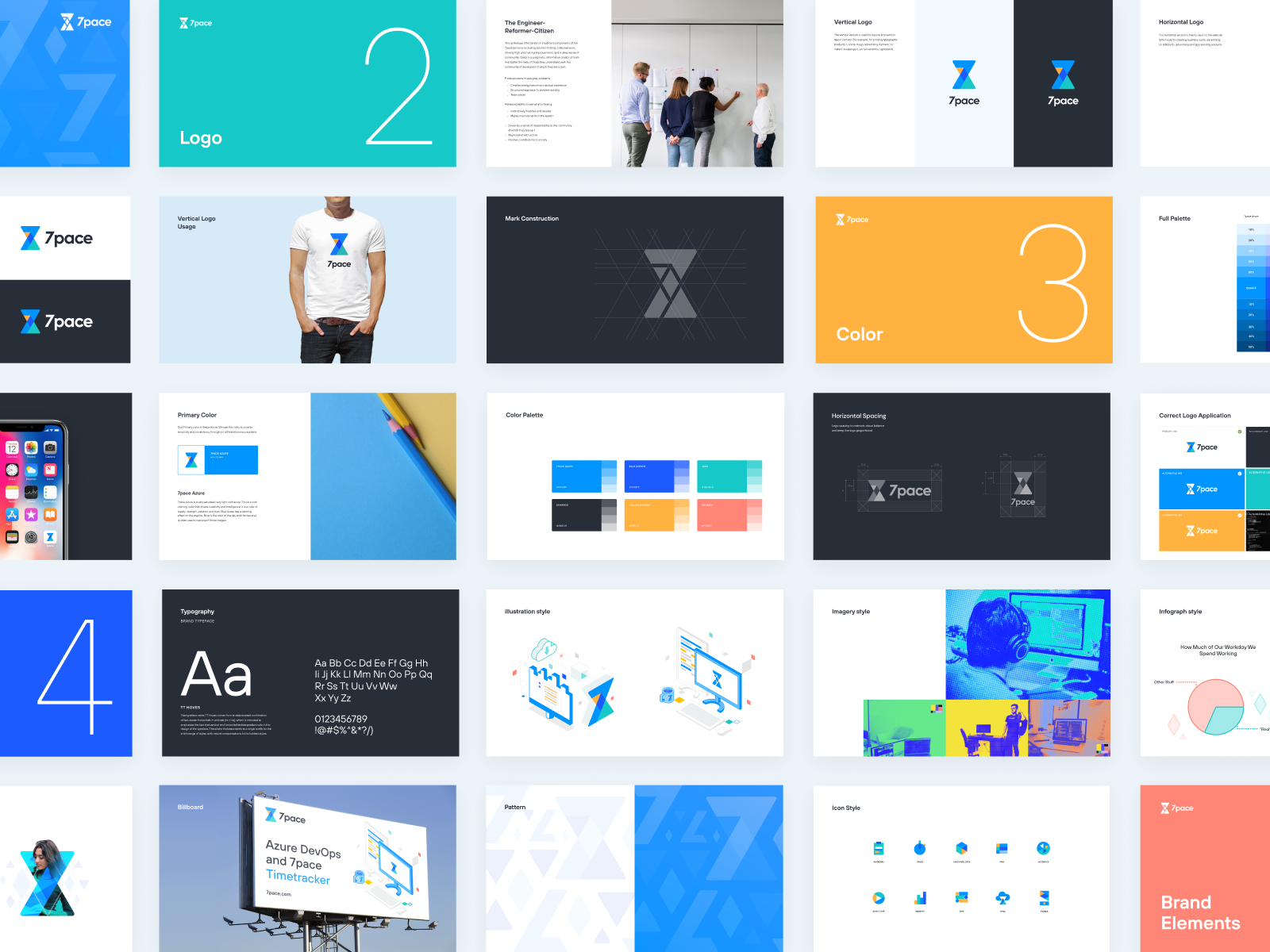
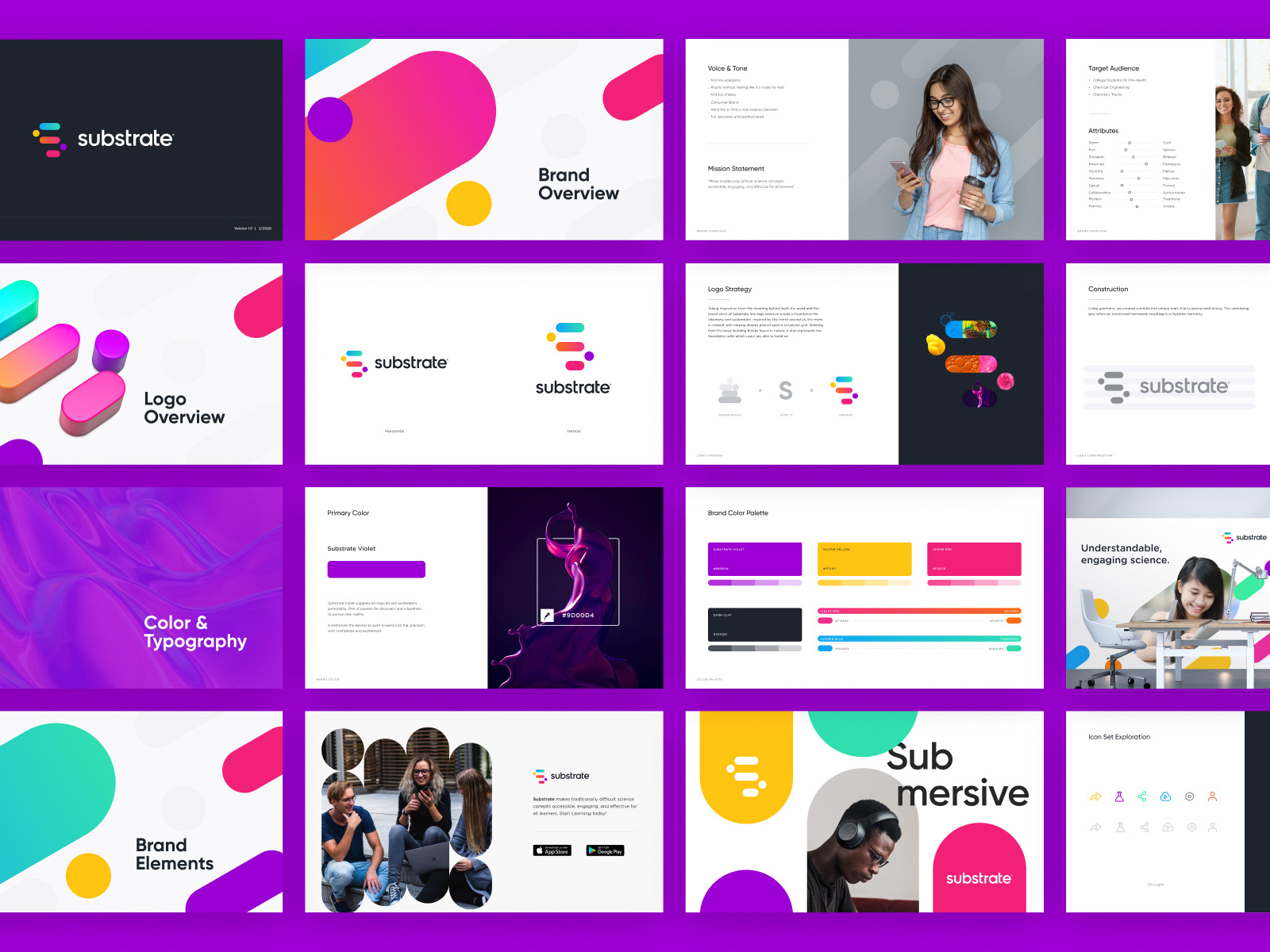
Navigation
Careful planning was essential for the navigation within each virtual venue. The controls needed to be user-friendly and logically positioned throughout the venue. Icons, titles, and buttons were meticulously designed to ensure clarity and ease of use. Furthermore, every specialized room was equipped with plugins, including gamification, downloads, and well-considered third-party add-ons.
Technical Challenges
In addition, we had to address the UI/UX navigation challenges for online attendees. This encompassed considerations related to the technical aspects of the end user's computing device. Factors such as the type of device (e.g., PC, Mac, or mobile device) used to access the virtual venue needed to be taken into account. Since many online users did not possess high-performance computers with robust GPUs, we aimed to avoid using programs like Unity to construct immersive 3D environments, akin to video games, to prevent attendees from becoming disoriented in our virtual venue. Many online attendees were not familiar with video gaming, and augmented reality (AR) and virtual reality (VR) technologies had not yet become prevalent in the professional realm.
Low and High Fidelity
Mock-Ups We initiated the design process with a series of low-fidelity mock-ups for each virtual venue. These mock-ups provided a detailed outline of every screen and menu, offering insights into the content of each room. Some of the rooms featured a range of elements, including videos, gamification plug-ins, Zoom integration, chat functions, animated banners, links to Amazon stores, newsletters, and more. To realize our vision, we enlisted the expertise of five to six concept artists who collaborated on the integration of UI/UX designs into the virtual venues.
For the creation of the 3D rooms, we employed software programs such as Unreal Engine 5, Cinema 4D, Vectorworks, and Coohom. To refine the visual elements, Adobe Photoshop and Illustrator were utilized to add text and graphical elements. Subsequently, Adobe XD and Figma were employed to generate a functioning prototype, which was then seamlessly transitioned to the development team for implementation.
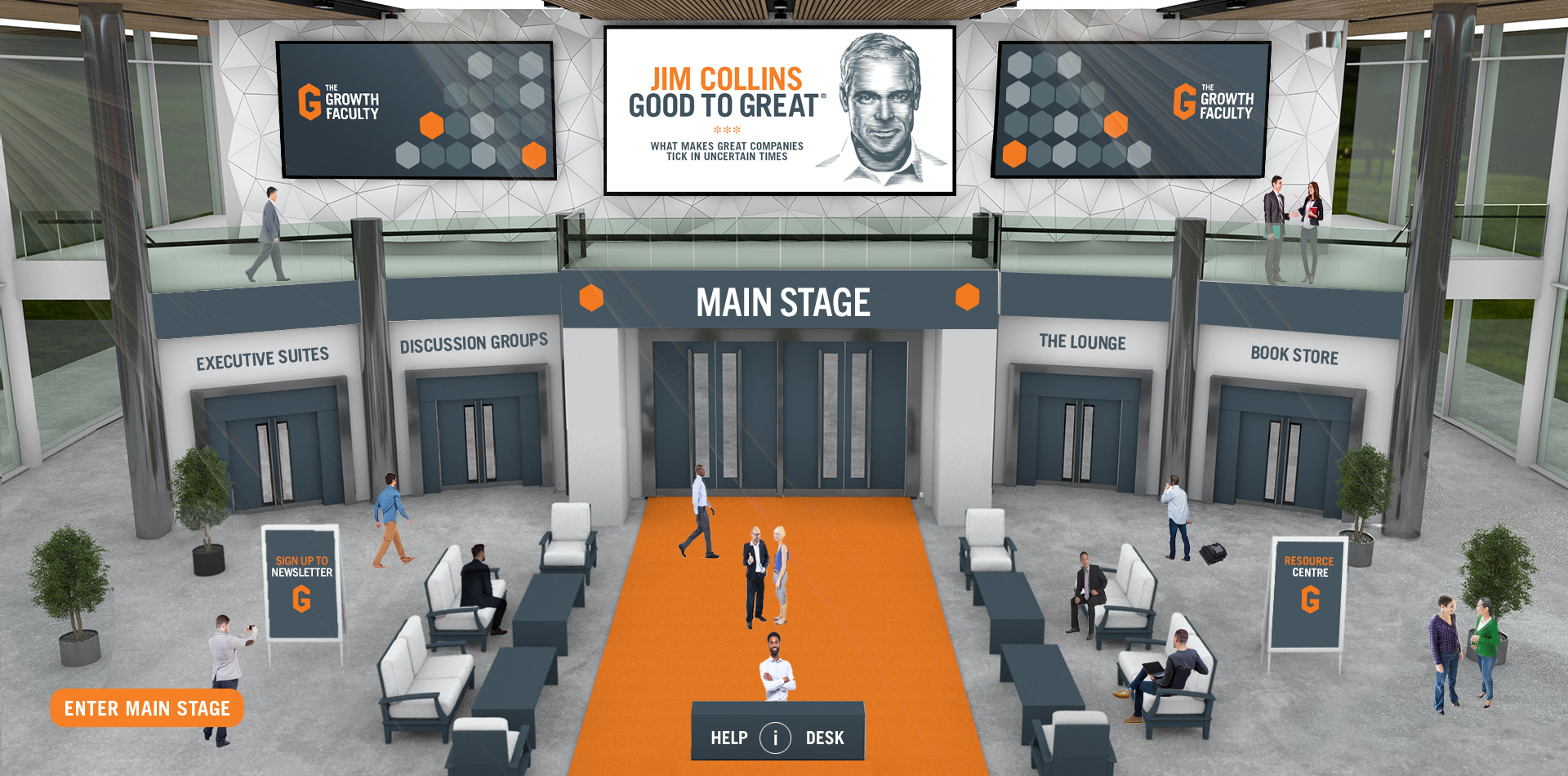
Jim Collins - The Growth Faculty

Jim Collins - The Growth Faculty
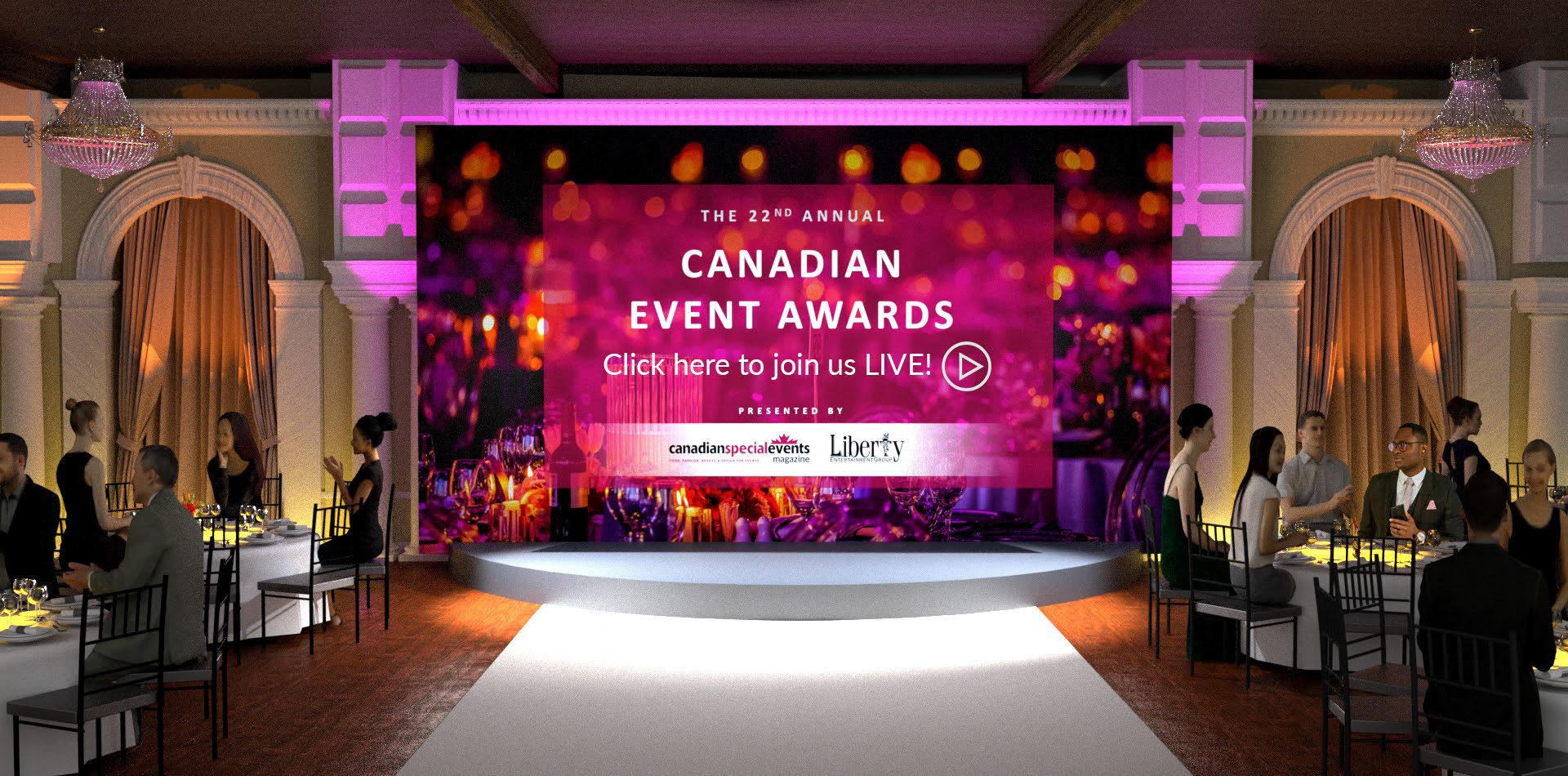
2020 Canadian Event Awards

2020 - Canadian Event Awards

ASTA - Virtual Event 2020
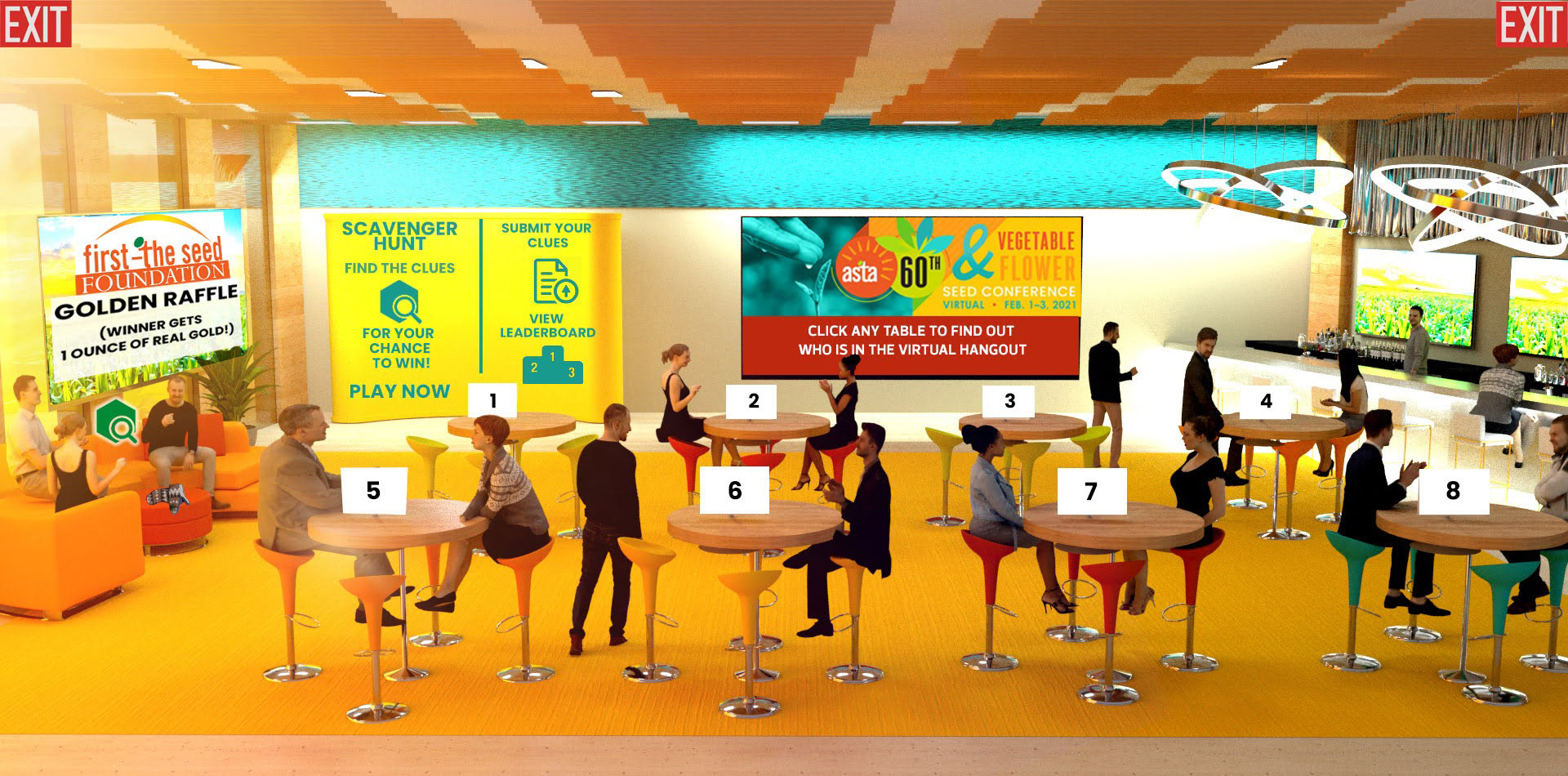
ASTA - Virtual Event 2020
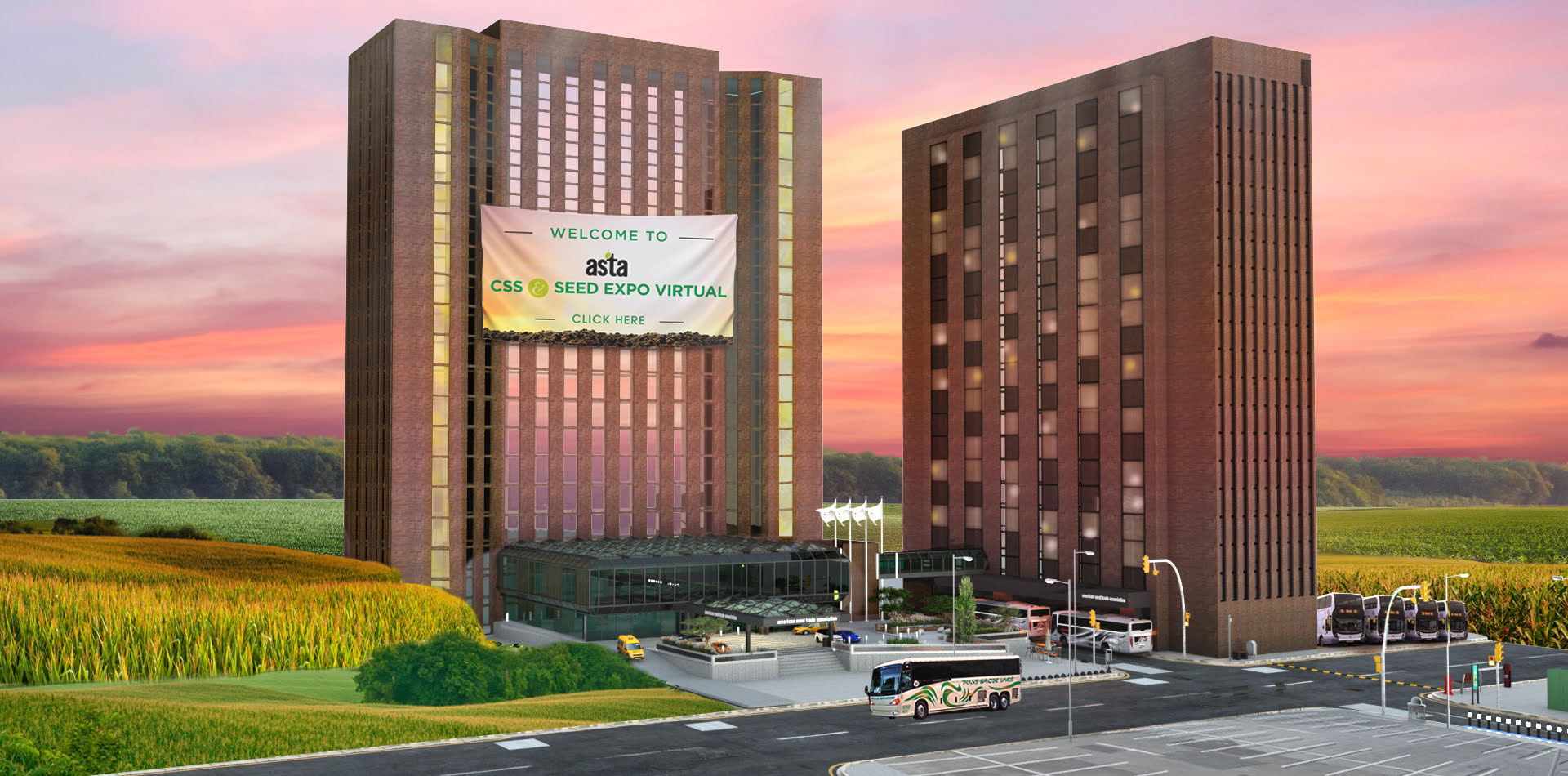
ASTA - Seed Expo Virtual
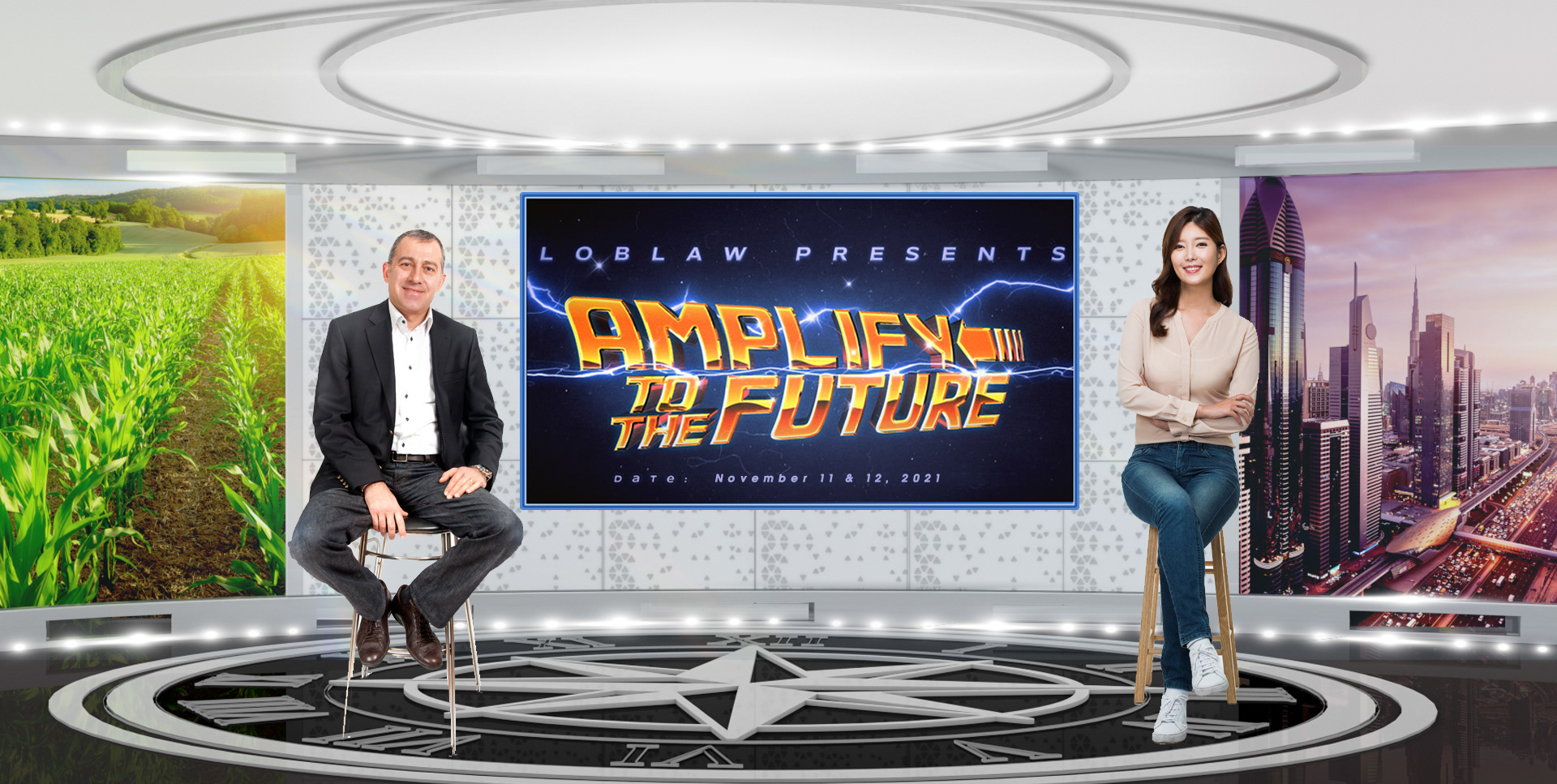
Loblaws amplify the future
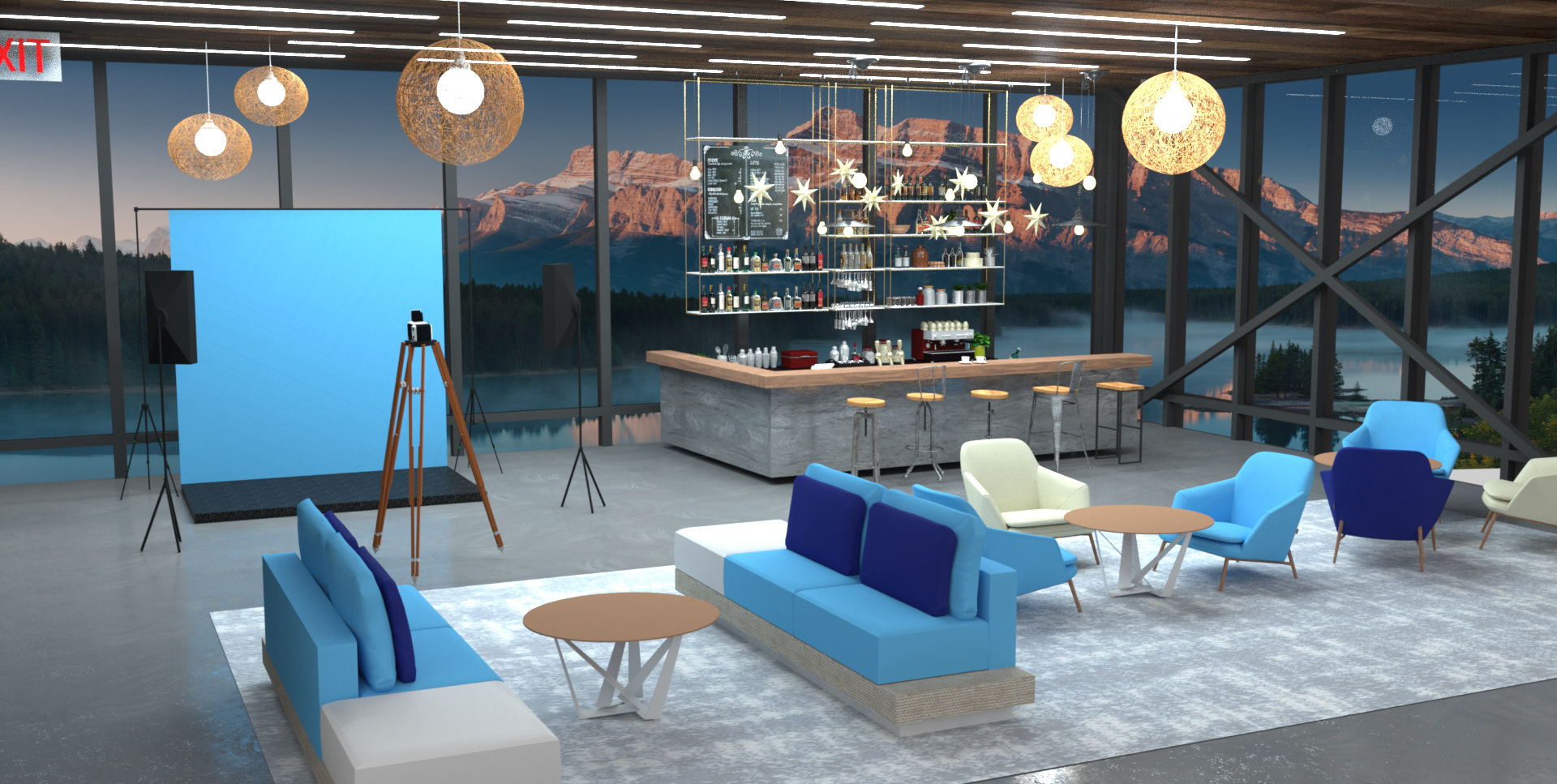
Loblaws

Loblaws
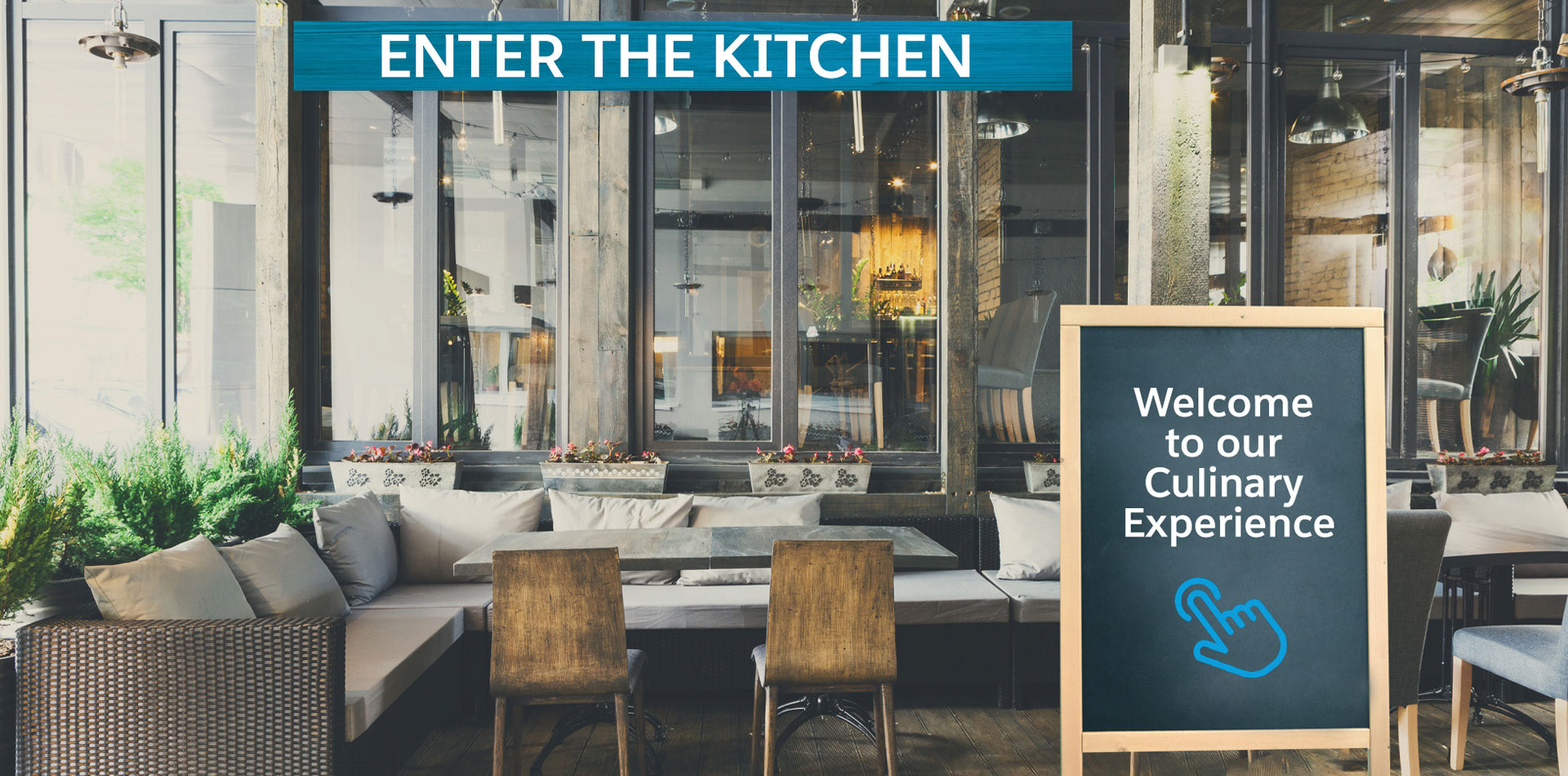
Salesforce - Culinary Experience

Salesforce - Culinary Experience

Samsung S20 Event
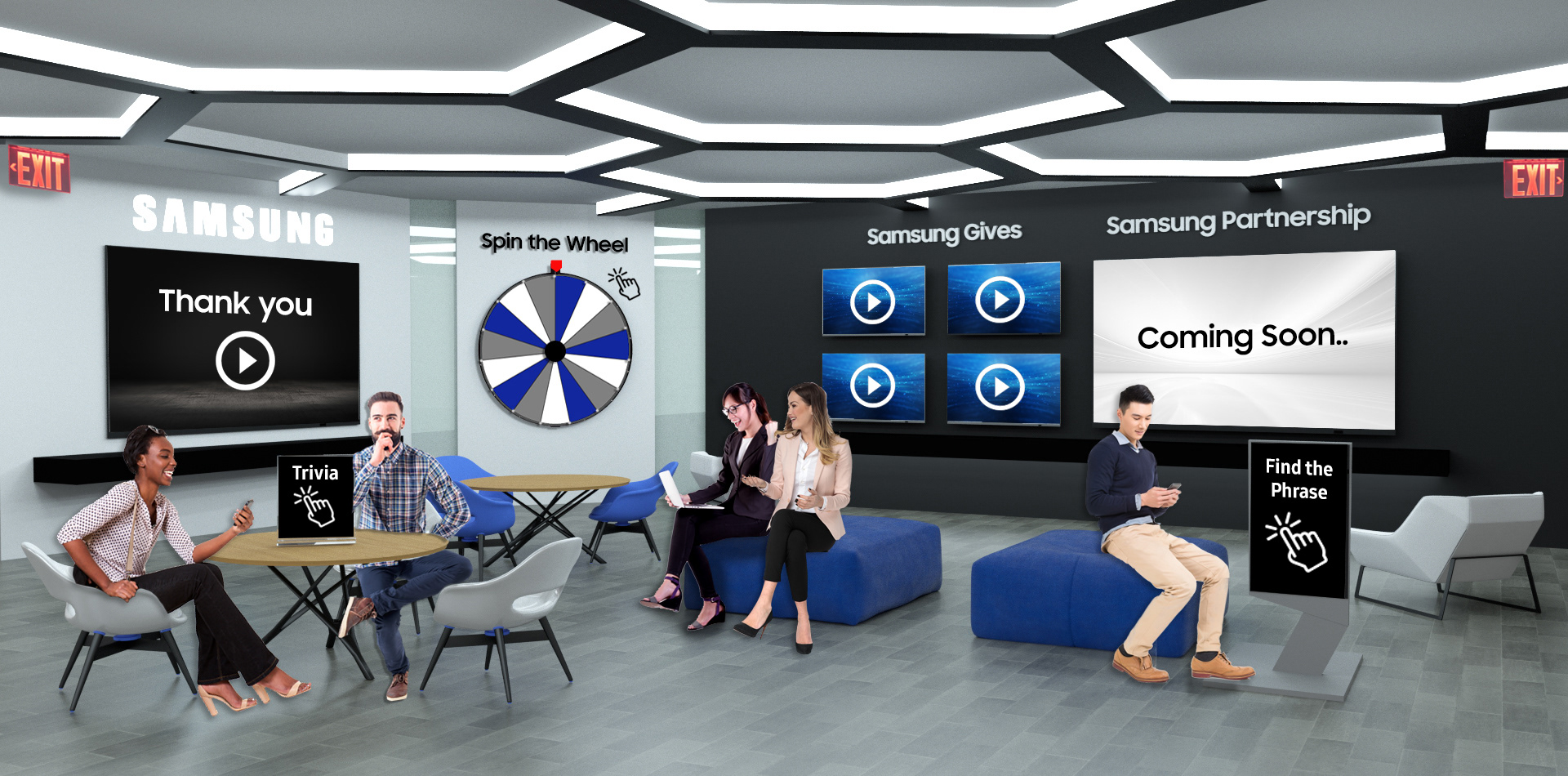
Samsung S20 Event
Outcome
Throughout the course of the COVID-19 pandemic, TK Events successfully executed more than 200 tailor-made virtual events. These events catered to a diverse clientele, including prominent organizations such as Dell Technologies, Samsung, D2L, Quadient, ISF, Loblaws, American Seed, Baker Tilley, Haltech, CDW, Canadian Event Awards, and Jim Collins. As a result, our workforce expanded significantly, growing from 12 employees to nearly 40.
On average, these virtual events attracted approximately 5,000 to 10,000 virtual attendees, marking a substantial increase compared to the typical attendance at live events, which averaged 2-3 times higher. This elevated virtual engagement translated to remarkable success for our clients during a challenging period. Many of our clients experienced up to three times more sales leads than they traditionally garnered from in-person events, underscoring the effectiveness of our virtual event solutions.
Contact me at eruslim@gmail.com to receive permission to view.
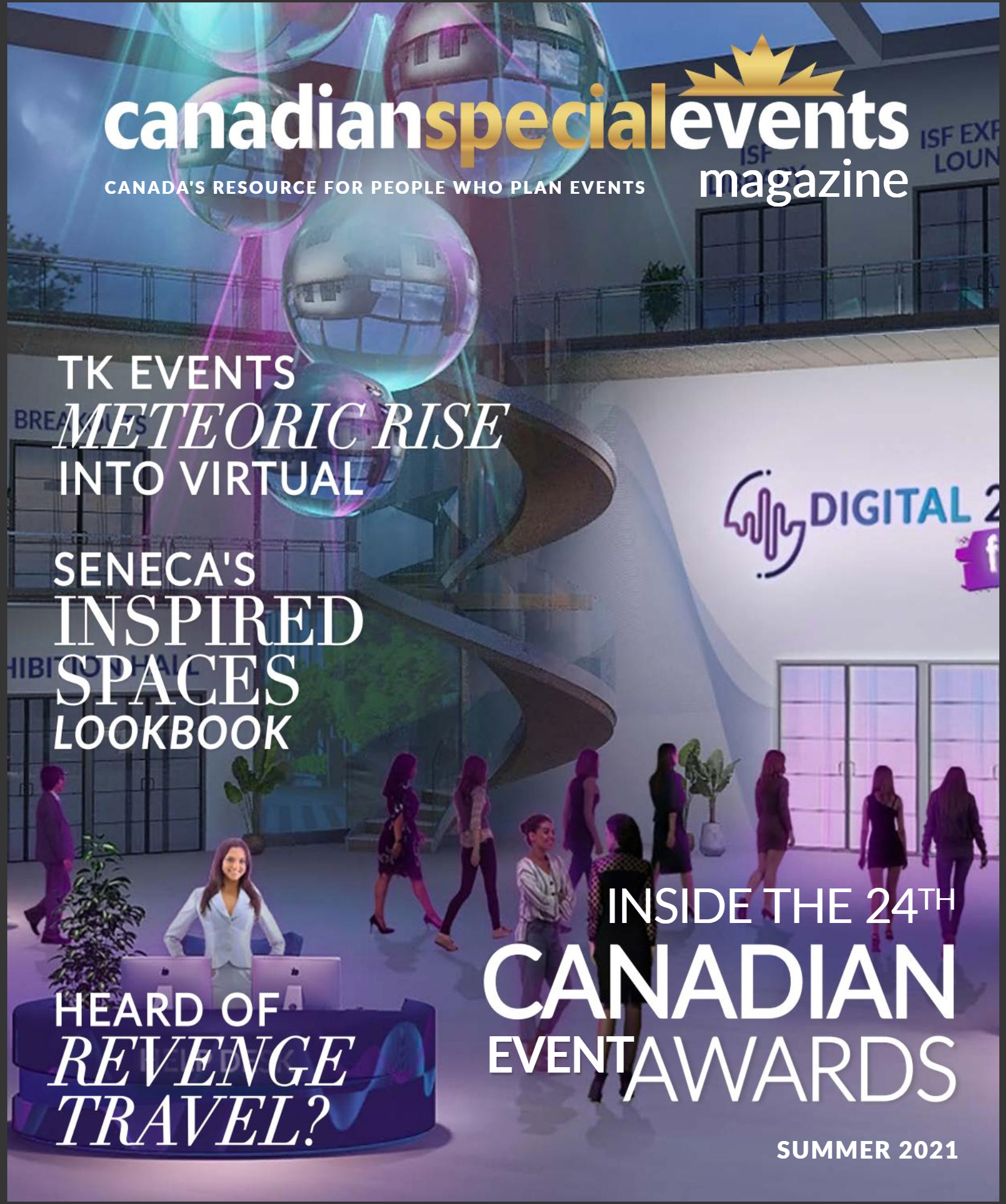
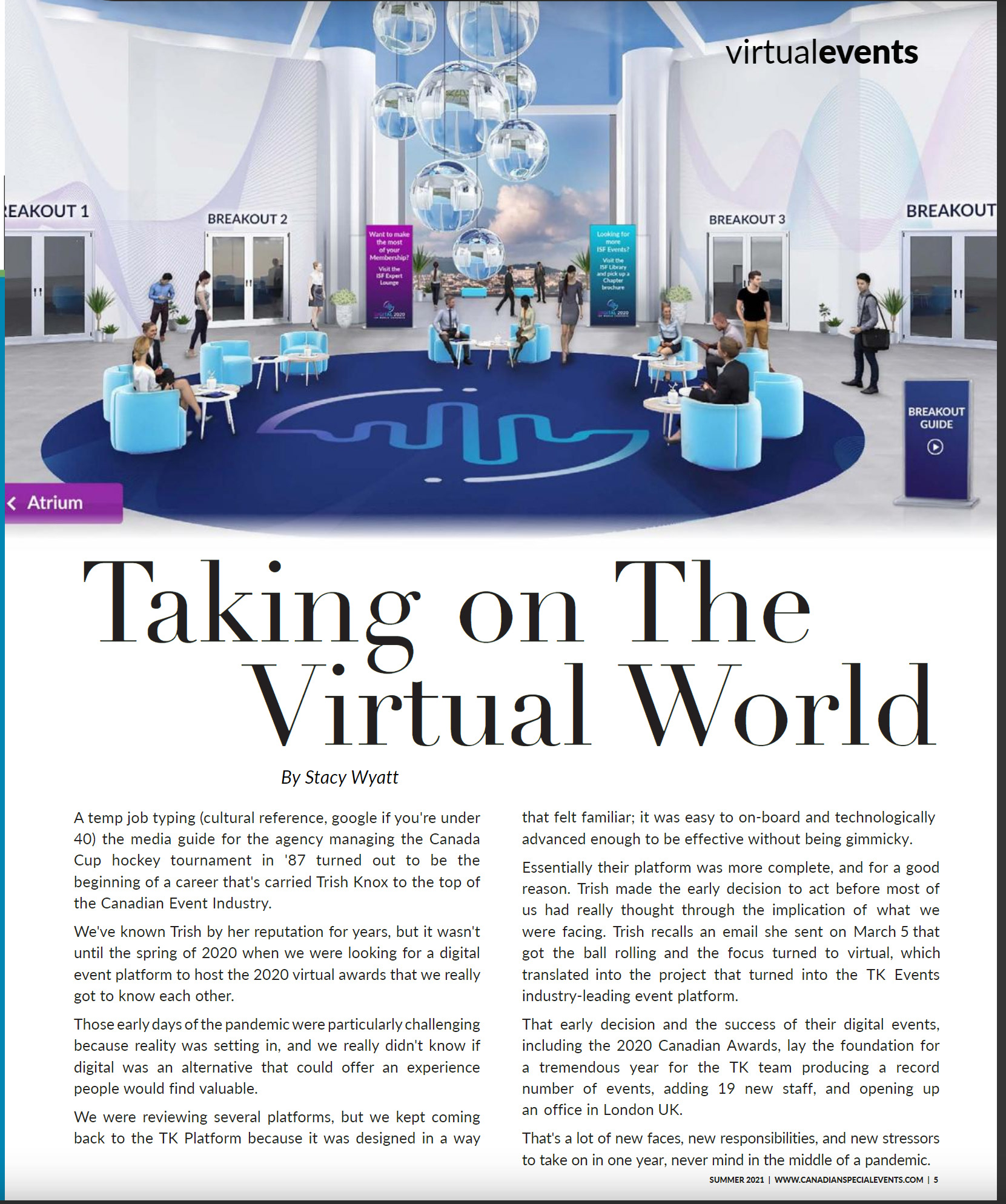
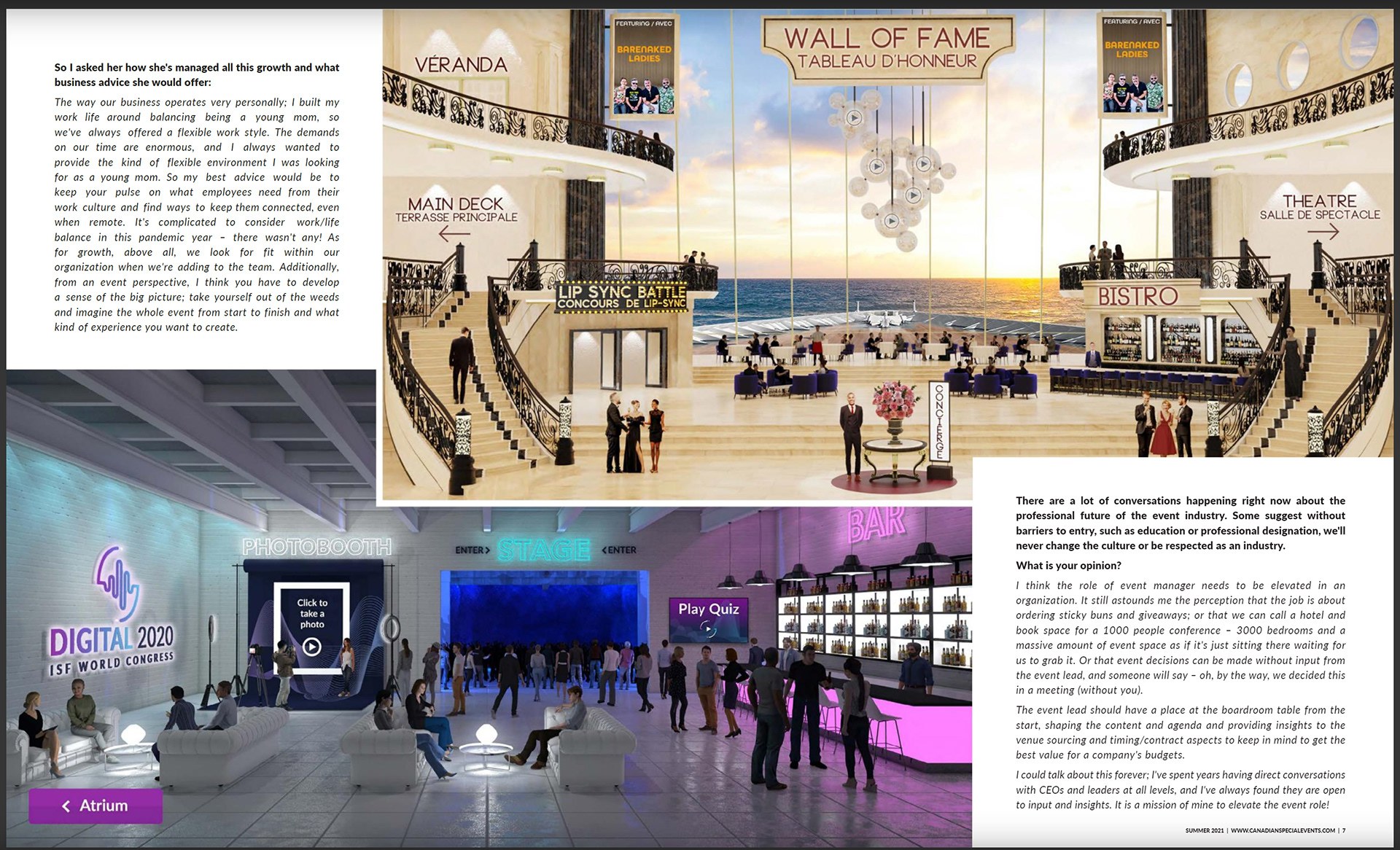
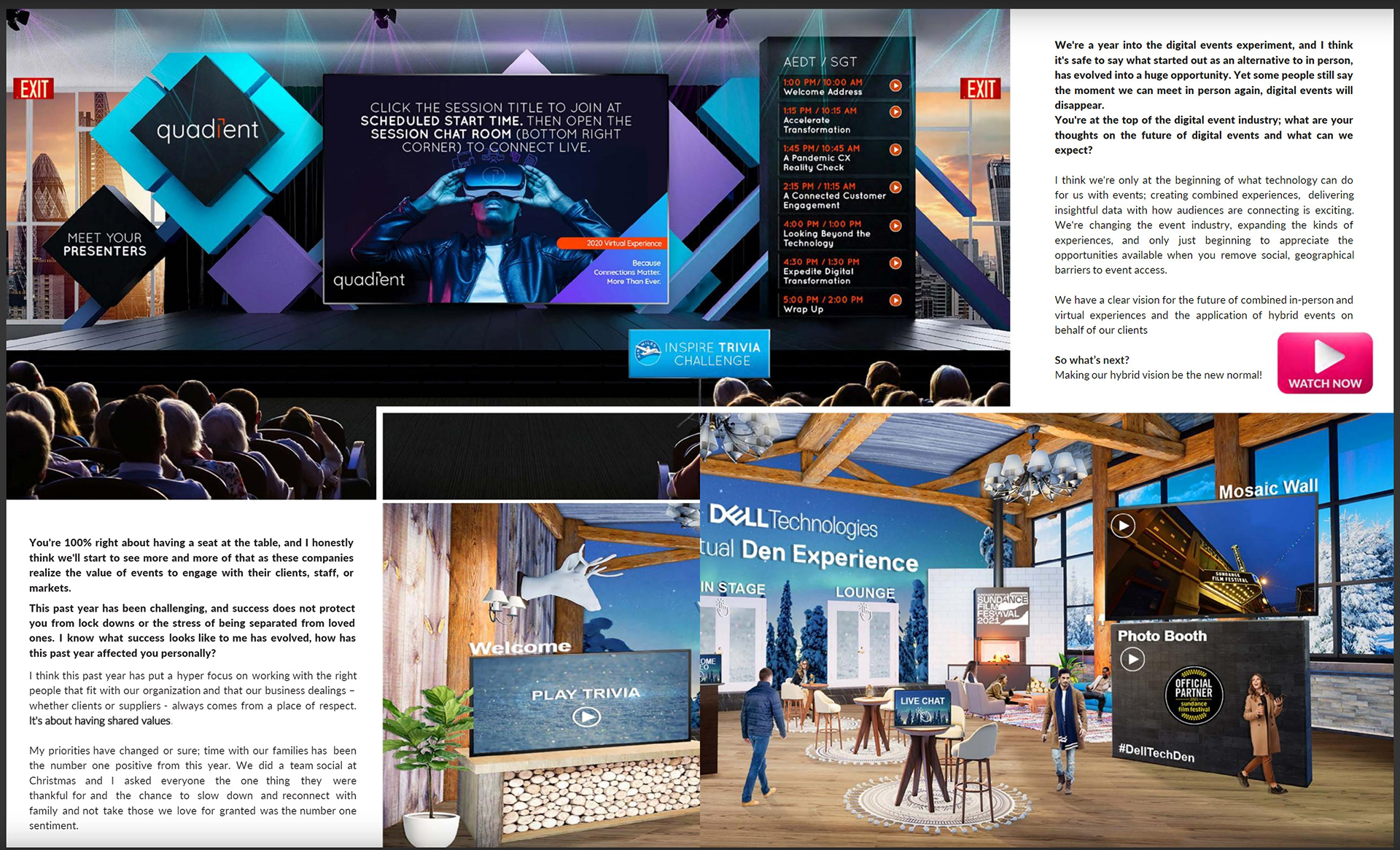
Awards Won:
Silver for Best Pandemic-era Virtual Experience (Consumer)
Silver for the Best Pandemic-era Pivot Experience (Consumer)
Issued by Eventsmarkets Ex Awards · Nov 2021
